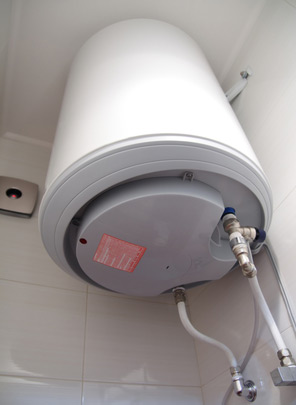Everyone has got their own unique opinion involving Tips For Maintaining Your Hot Water Heater.

Warm water is crucial for day-to-day convenience, whether it's for a rejuvenating shower or washing recipes. To guarantee your hot water system runs efficiently and lasts much longer, normal upkeep is essential. This article gives practical suggestions and understandings on how to keep your home's hot water system to avoid disruptions and expensive repair work.
Intro
Preserving your home's hot water system could appear difficult, however with a few straightforward actions, you can guarantee it runs smoothly for several years to find. This overview covers whatever from understanding your warm water system to DIY upkeep tips and recognizing when to contact professional assistance.
Relevance of Preserving Your Warm Water System
Routine upkeep not only expands the lifespan of your warm water system yet likewise guarantees it operates effectively. Neglecting maintenance can bring about decreased efficiency, greater power bills, and even early failing of the system.
Signs Your Hot Water System Requirements Upkeep
Knowing when your hot water system requires focus can prevent major problems. Keep an eye out for signs such as inconsistent water temperature, odd sounds from the heater, or rusty water.
Comprehending Your Warm Water System
Prior to diving right into upkeep tasks, it's valuable to comprehend the standard parts of your warm water system. Generally, this includes the water heater itself, pipelines, anode poles, and temperature level controls.
Month-to-month Upkeep Tasks
Normal monthly checks can help catch minor issues before they intensify.
Flushing the Water Heater
Flushing your water heater eliminates sediment accumulation, enhancing efficiency and prolonging its life.
Checking and Replacing Anode Rods
Anode poles protect against rust inside the storage tank. Checking and changing them when worn is vital.
Checking and Changing Temperature Level Setups
Changing the temperature settings guarantees optimum efficiency and security.
DIY Tips for Maintenance
You can carry out several upkeep jobs on your own to maintain your hot water system in top condition.
Looking for Leaks
On a regular basis check pipes and connections for leakages, as these can bring about water damages and higher bills.
Examining Stress Alleviation Valves
Evaluating the pressure safety valve guarantees it works correctly and protects against too much pressure buildup.
Shielding Pipelines
Protecting hot water pipelines decreases heat loss and can conserve power.
When to Call an Expert
While DIY upkeep is useful, some issues call for expert knowledge.
Complex Concerns Needing Professional Aid
Examples consist of major leaks, electric problems, or if your hot water heater is constantly underperforming.
Routine Expert Maintenance Conveniences
Expert upkeep can include thorough examinations, tune-ups, and guaranteeing conformity with security criteria.
Final thought
Normal maintenance of your home's warm water system is vital for efficiency, durability, and price savings. By adhering to these suggestions and recognizing when to seek specialist help, you can make sure a dependable supply of warm water without unexpected interruptions.
How to Maintain an Instant Hot Water Heater
Before tinkering with your hot water heater, make sure that it’s not powered on. You also have to turn off the main circuit breaker and shut off the main gas line to prevent accidents. Also turn off the water valves connected to your unit to prevent water from flowing into and out of the appliance. 2. When you’re done, you have to detach the purge valves’ caps. These look like the letter “T†and are situated on either side of the water valves. Doing so will release any pressure that has accumulated inside the valves while at the same time avoid hot water from shooting out and burning your skin. 3. When the purge valves’ caps are removed, you have to connect your hosing lines to the valves. Your unit should have come with three hoses but if it didn’t, you can purchase these things from any hardware or home repair shops. You can also get them from retail stores that sell water heating systems. Read the user’s manual and follow it to complete this task properly. When the hosing lines are connected, open the purge port’s valves. 4. You should never use harsh chemical cleaners or solutions when cleaning your unit. Make use of white vinegar instead. It should be undiluted and you’ll probably use about 2 gallons. 5. Now flush your water heater. This task should probably take about 40 minutes. We can’t give you specific directions for this because the procedure is carried out depending on the type, model and brand of your heater. With that being said, refer to the user’s manual. 6. When you’re done draining the unit, you have to turn off the purge port valves again. Remove the hosing lines that you earlier installed on each of the water valves. Put the valve caps (purge port) back in their respective places and be very careful so as not to damage the rubber discs that are found inside these caps. 7. Now that everything’s back in place, check your user’s manual again to find out how to reactivate your water heating system. 8. Once it is working, turn one of your hot water faucets on just to let air pass through the heater’s water supply pipes. Leave the tap on until water flows smoothly out of it. https://www.orrplumbing.com/blog/2014/september/how-to-maintain-an-instant-hot-water-heater/

As an avid person who reads on What Kind of Maintenance Do Water Heaters Need?, I imagined sharing that editorial was really useful. Kindly take the opportunity to promote this article if you appreciated it. We recognize the value of reading our article about Tips on Maintaining a Water Heater.
Schedule And Pricing